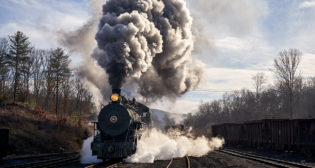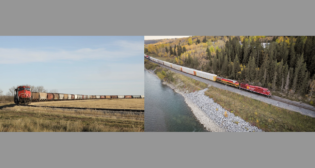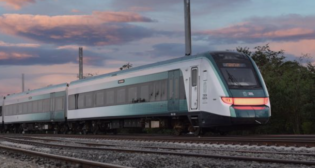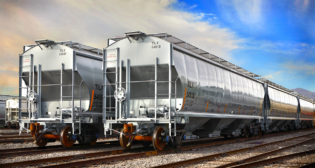
NTSB Releases WMATA 2021 Derailment Report
Written by Marybeth Luczak, Executive Editor![The NTSB observed the inspection and disassembly of wheelset #4 from railcar 7200, which caused the 2021 Washington Metropolitan Area Transit Authority derailment in Virginia. “In accordance with wheelset design, each wheel should have been flush against its bearing when mounted,” NTSB wrote in its January 2023 derailment investigation report. “Before disassembly, the inspection identified gaps between both wheels and their respective bearings: about 0.63 inches for the right-side wheel and about 1.10 inches for the left-side wheel [see above] … The back-to-back measurement was about 55.375 inches, or about 2 inches wider than the maximum design specification.” (NTSB Image)](https://www.railwayage.com/wp-content/uploads/2024/02/lead.png)
The NTSB observed the inspection and disassembly of wheelset #4 from railcar 7200, which caused the 2021 Washington Metropolitan Area Transit Authority derailment in Virginia. “In accordance with wheelset design, each wheel should have been flush against its bearing when mounted,” NTSB wrote in its January 2023 derailment investigation report. “Before disassembly, the inspection identified gaps between both wheels and their respective bearings: about 0.63 inches for the right-side wheel and about 1.10 inches for the left-side wheel [see above] … The back-to-back measurement was about 55.375 inches, or about 2 inches wider than the maximum design specification.” (NTSB Image)
The National Transportation Safety Board (NTSB) on Jan. 4 issued its final report on the October 2021 Washington Metropolitan Area Transit Authority (WMATA) train derailment in Arlington, Va., attributing the cause to a wheelset irregularity. Chair Jennifer Homendy was critical of both the transit agency’s “safety culture” and the Federal Transit Administration’s (FTA) oversight.
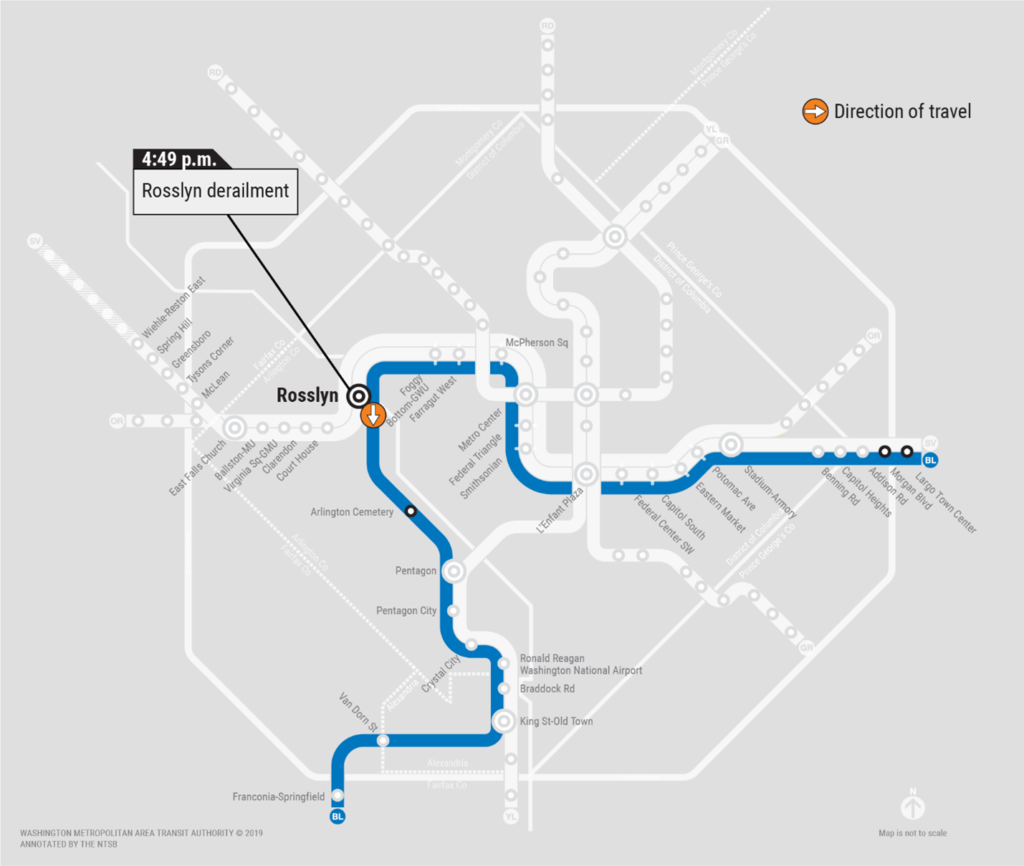
WMATA’s train 407, comprising eight Kawasaki Rail Car-built 7000 series railcars and carrying 187 riders and the operator, derailed Oct. 12, 2021, while traveling from Rosslyn Station toward Arlington Cemetery Station on the Blue Line in Arlington, Va. (see map above). The derailment occurred in a tunnel south of the Rosslyn Station platform. All railcars remained upright and in-line. No injuries were reported; one passenger was transported to the hospital, treated and released.
The derailment occurred “because the wheels of one wheelset [on railcar No. 7200] had migrated outward on their axle, resulting in a width larger than the design specification,” according to the NTSB (download the agency’s report and watch the video recreation below). “The wheel migration happened over time, eventually causing the wheelset to exceed [by two inches] its maximum design width [of 53-3/8 inches]. When this wheelset traveled over a turnout … the out-of-specification wheelset width caused a wheel to leave the rail, derailing a railcar.”
NTSB also reported finding that “one department within WMATA was aware of wheel migration in its railcar fleet and attempted to mitigate the associated safety risks.”
According to the NTSB report, “WMATA observed cases of wheels migrating outward on their axles over time in the pre-7000-series fleet (the legacy fleet) in 2014 and responded by increasing the interference specification for the 7000-series, which was then in production. As a result, at the time of the derailments, the 7000-series fleet included wheelsets assembled under two different interference specifications: 0.0035-0.0060 inches (original) and 0.0045-0.0065 inches (after June 16, 2017, when WMATA approved revised design drawings from Kawasaki). These specifications resulted in wheelsets with mounting forces of 55-80 tons (original) and 65-95 tons (after revision).” The NTSB said that “[a]ccording to WMATA’s records, axle #4 on railcar 7200 was assembled under the original specification on April 8, 2016. The interference for both wheels was 0.0044 inches, resulting in a mounting force of 64 tons for the right wheel and 58 tons for the left wheel.”
NSTB reported that WMATA “did not conduct a trend analysis to monitor the incidence of wheel migration or how effective its mitigations were.” A trend analysis, NTSB said, “would have shown the increasing incidence of wheel migration and made an effective response more likely.”
WMATA has “since made improvements to its safety management systems and has plans to expand its use of trend analysis and related tools to identify and mitigate safety risks before accidents occur,” according to NTSB. “The oversight of the Washington Metrorail Safety Commission is vital to supporting and monitoring these ongoing improvements.”
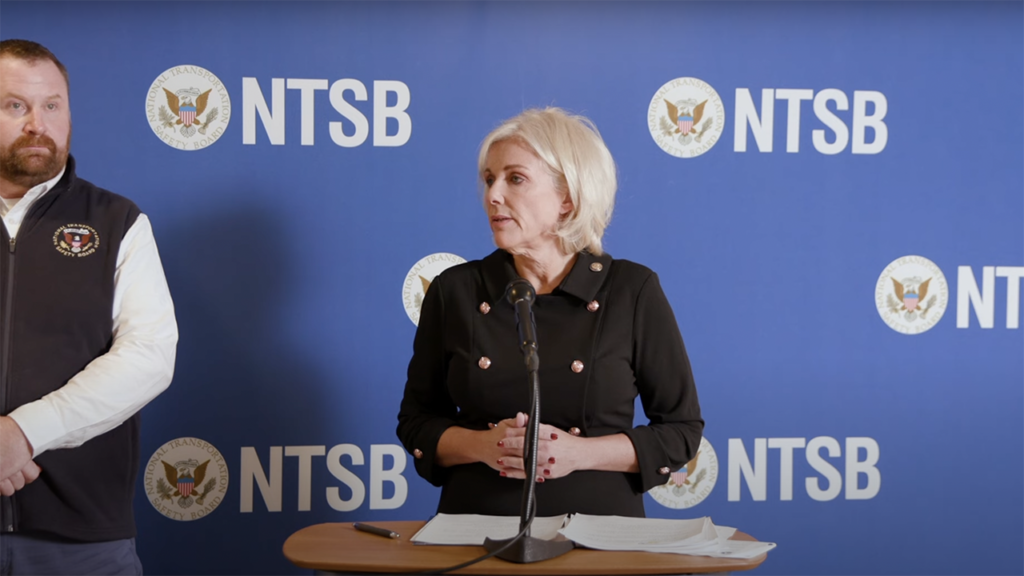
“With any NTSB investigation, the key isn’t determining what happened, which we know pretty early on, but it’s how it happened,” Homendy said during a Jan. 4 press conference on the NTSB report release (scroll down to watch). “That’s how we prevent future accidents and tragedies. But once we issue safety recommendations, those recommendations need to be acted upon, otherwise safety isn’t assured. Since 1982, the NTSB has investigated 15 accidents on the WMATA rail system. In total we’ve issued 125 safety recommendations to WMATA, the oldest of those recommendations date back to 1970 when the system was still under construction. I want to read it to you. We recommended to WMATA to develop the capability within your organization for system safety engineering [SMS] … and apply system safety principles to all aspects of the proposed rail system. And here’s the key: to identify, assess and correct those deficiencies identified by the analysis. Since that recommendation was issued in 1970, we’ve consistently identified WMATA’s failure to adequately assess and mitigate safety risk; WMATA’s poor safety culture; and the failure of our federal government to oversee, regulate and enforce safety on our nation’s public rail transit systems, which are responsible for safely transporting millions of passengers daily. WMATA alone transports an average of 287,000 people every day.”
Homendy noted that “operators like WMATA are absolutely responsible for ensuring the safety of their systems, but when they can’t or they won’t or when there are repeated safety issues, it’s up to federal and state governments to take action to ensure safety of public citizens.” The Fixing America’s Surface Transportation (FAST) Act of 2015 “gave DOT, in particular the FTA the authority to regulate and enforce safety standards for public transit systems,” she said. “To date they have not exercised this authority. I will note that the FAST Act also stated that in exercising that authority, USDOT should consider relevant NTSB recommendations asking DOT to act and to implement minimum safety standards and to enforce those safety standards. Those recommendations for the NTSB go back to 1978 … And yet, here we are today with unenforceable voluntary safety standards, in what we call a National Public Transportation Safety Plan. As a result, there are no enforceable federal standards for the Washington Metrorail Safety Commission to hold WMATA accountable. Let me put a finer point on this. If I wanted to haul a freight train full of coal through West Virginia today, there is a large book of federal standards I’d have to abide by. But if I want to operate a transit train loaded with passengers at rush hour in the nation’s capital capitol, there are no federal minimal standards required. None. FTA’s failure to take their authority seriously is evident in their party submission to the NTSB. Their party submission states: It would be our recommendation to NTSB to prevent similar events, to encourage all transit agencies operating heavy rail transit cars exceeding 20,000 pounds to increase the interference fit and press force on wheelsets to freight industry standards, which WMATA has done. But you don’t need to recommend it if you’re FTA. You don’t need to encourage it. You need to mandate it. You have the authority to do so, just like we do for every other mode of transportation: aviation, marine, pipeline, highways, freight and intercity passenger rail—they’re all regulated and those regulations are enforceable. So, I’m calling on FTA to take immediate action to regulate and enforce safety on our nation’s public transit rail systems.”
Post-Derailment Actions
On Oct. 17, 2021, the Washington Metrorail Safety Commission (WMSC) ordered WMATA to remove the 7000-series fleet from revenue service, develop a response to wheel gage anomalies in 7000-series railcars, and implement a plan for safely returning 7000-series railcars to revenue service, according to the NTSB. On Dec. 29, 2021, WMSC issued an additional order, setting criteria for WMATA to meet before returning the 7000-series fleet to revenue service. These criteria included internal oversight practices, data-driven revision of inspection frequency, and WMSC approval of WMATA’s return-to-service plan, NTSB reported. WMSC also required WMATA to develop and implement corrective action plans related to the 7000-series fleet and to emergency response, according to NTSB, which noted that “[t]hese plans are intended to improve accountability, risk management, and the efficacy of train operators and ROCC [Rail Operations Control Center] personnel in handling emergencies.”
On Nov. 1, 2021, the FTA issued a Safety Advisory, SA-21-1, requiring State Safety Oversight Agencies “to report information about out-of-tolerance wheel gages to the FTA within 30 days,” according to NTSB, which said the FTA did not receive any other reports. SA-21-1 also advised the State Safety Oversight Agencies “to require fleet-wide inspections of wheel gages on all rail transit vehicles in revenue service,” NTSB said.
After the Rosslyn derailment, WMATA inspected all 2,992 wheelsets in the 7000-series fleet, finishing in November 2022, according to NTSB. “These inspections identified about 50 Railroad Investigation Report RIR-23-15 30 wheelsets that had exhibited outward wheel migration reaching or exceeding the 53.375-inch maximum specification, bringing the total number of affected wheelsets in the 7000-series fleet to about 80,” NTSB reported. “None exhibited wheel migration as pronounced as the 2-inch exceedance measured on wheelset #4 of railcar 7200 after the Rosslyn derailment.”
Following the derailment, NTSB investigation, and orders from the WMSC, NTSB reported that WMATA removed the 748 7000-series cars from service and developed a return-to-service plan that includes “replacement of all wheelsets in the 7000-series fleet with wheelsets assembled with an interference of 0.0065-0.0080 inches and a mounting force of 80–120 tons.”
NTSB reported that based on a “Hatch LTK report, and on related reports WMATA obtained from MxV and Kawasaki Rail Car, WMATA’s wheelset replacement program for the 7000-series fleet calls for increasing the interference specification to 0.0065-0.0080 inches (resulting in a mounting force of 80–120 tons) to correct insufficient interference fits, which WMATA assessed as the reason for the wheel migration.” According to NTSB, WMATA began replacing wheelsets July 31, 2023, and the replacement process for the entire fleet is scheduled to take three years. (For more on WMATA’s wheelset retrofit program, read: “WMATA Addressing ‘Pressing’ Problem.”)
“WMATA has been physically inspecting 7000-series wheelsets at 30-day intervals and plans to continue this practice for non-replaced wheelsets,” NTSB reported. “Replaced wheelsets will be physically inspected at 60-day intervals. WMATA is also deploying automated wayside inspection systems to monitor back-to-back measurements to supplement these physical inspections.”
Due to the two-year-old shortage of 7000-series equipment, which comprises roughly 60% of its 1,200-car fleet, WMATA said in December that it “continues to utilize its oldest, least-reliable railcars in the legacy fleet. As more 7000-series railcars are completed, tested and able to run longer between inspection intervals, we will gradually be able to increase the number in service, providing customers with more reliability and comfort. This will allow us to eventually remove the older, legacy railcar fleet from service.”
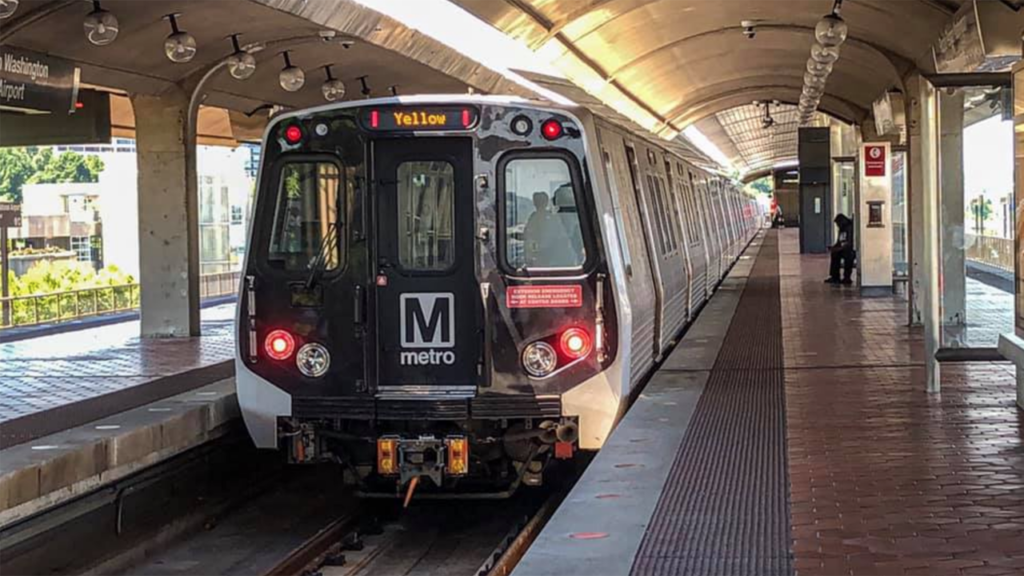
According to the NTSB report, the current version of WMATA’s public transportation agency safety plan adopted after the Rosslyn derailment “includes additional criteria for when departments must perform trend analyses, along with clarified standards on reporting risks to the ESC [WMATA Executive Safety Committee] and internal oversight. These changes are intended to ensure that risk mitigations are being followed and are working as intended.” Additionally, WMATA has undertaken changes to its maintenance program, including “revising existing processes and implementing new processes to identify safety critical items for all assets, setting system-wide criteria for reporting and tracking risks, automating trend reports, and establishing triggers for informing executives of adverse safety trends,” NTSB said. WMATA plans to finalize organizational changes and begin recruiting staff to support the new processes and tools in early 2024, according to the federal safety agency.
NTSB Conclusions
Following are the NTSB investigative report findings:
- None of the following issues contributed to the derailment: defects in the track or infrastructure; signals and train control systems; the train operator’s physical readiness for duty; and the train operator’s train handling.
- “The derailment of train 407 south of Rosslyn Station was caused by the out-of-specification widened wheelset #4 on railcar 7200 and its interaction with special track work.”
- “The out-of-specification back-to-back measurement on wheelset #4 was caused by incremental wheel migration over time.”
- “Had the Washington Metropolitan Area Transit Authority (WMATA) used trend analysis to assess the efficacy of its risk mitigation strategies for wheel migration, WMATA would have identified the increasing incidence of wheel migration in time to adopt more effective mitigation measures.”
- “While the Washington Metropolitan Area Transit Authority (WMATA) has a history of safety lapses related to risk identification and mitigation, its proposed additional processes and resources for expanding the role of trend analysis in identifying safety risks would, if implemented, increase the likelihood of WMATA successfully identifying and mitigating safety risks before accidents occur.”
- “Washington Metrorail Safety Commission oversight of the Washington Metropolitan Area Transit Authority’s (WMATA) planned implementation of trend analysis is necessary to ensure that the WMATA’s operations remain compliant with the safety management system documented in its public transportation agency safety plan, and that the as-implemented changes to trend analysis support continuing improvements in identifying and mitigating risks.”
NTSB Recommendations
As a result of NTSB’s investigation, it recommended that WMATA “[i]mplement processes and resources to expand the role of trend analysis in identifying and mitigating safety risks. (R-23-28)” and that the WMSC “[d]evelop and implement a program to support and monitor” WMATA’s use of trend analysis within its safety management system. (R-23-29).
WMATA’s Response
“Metro [WMATA] fully supports the NTSB Derailment report and thanks all parties to the investigation for their leadership and thoughtful approach,” WMATA reported in a Jan. 4 post on social media platform X, formerly known as Twitter. “The collaboration and professionalism between the NTSB and WMSC have been critical to our ability to move this process forward, and we appreciate that our proactive steps have been acknowledged. Metro has issued a fleet defect notice to Kawasaki related to our performance-based contract. Based on the contract, Kawasaki is responsible to pay all costs to fix this wheelset defect [estimated at $55 million]. We are confident that our current Wheelset Replacement program will address this wheelset defect as we work over the next several years to repress all 7000-series wheelsets at a higher press tonnage and increased interference fit.”
Kawasaki Speaks Out
“As expected, the NTSB’s conclusions align with our own findings and confirm that Kawasaki met the design and mounting specifications established by WMATA for the 7000 series wheelsets,” Kawasaki said in a statement released to Railway Age. “While we understand the budget crisis that WMATA is facing, any suggestion that Kawasaki should absorb the cost of WMATA’s own failures regarding the wheelsets of the 7000 series trains is not rooted in reality. As a reminder, WMATA supplied the wheelset design for the 7000 series railcars to match their older railcars and then failed to alert Kawasaki when they increased the mounting pressure for those older railcars after they identified 33 instances of back-to-back failures in 2014—before the first 7000 series car was even delivered. The mismanagement by WMATA under prior leadership, cited in the NTSB’s final report, comes as no surprise to those who have followed the agency. We look forward to seeing the 7000 series railcars resume their legacy of safety and reliability as WMATA implements the recommendations outlined in the NTSB’s report.”
